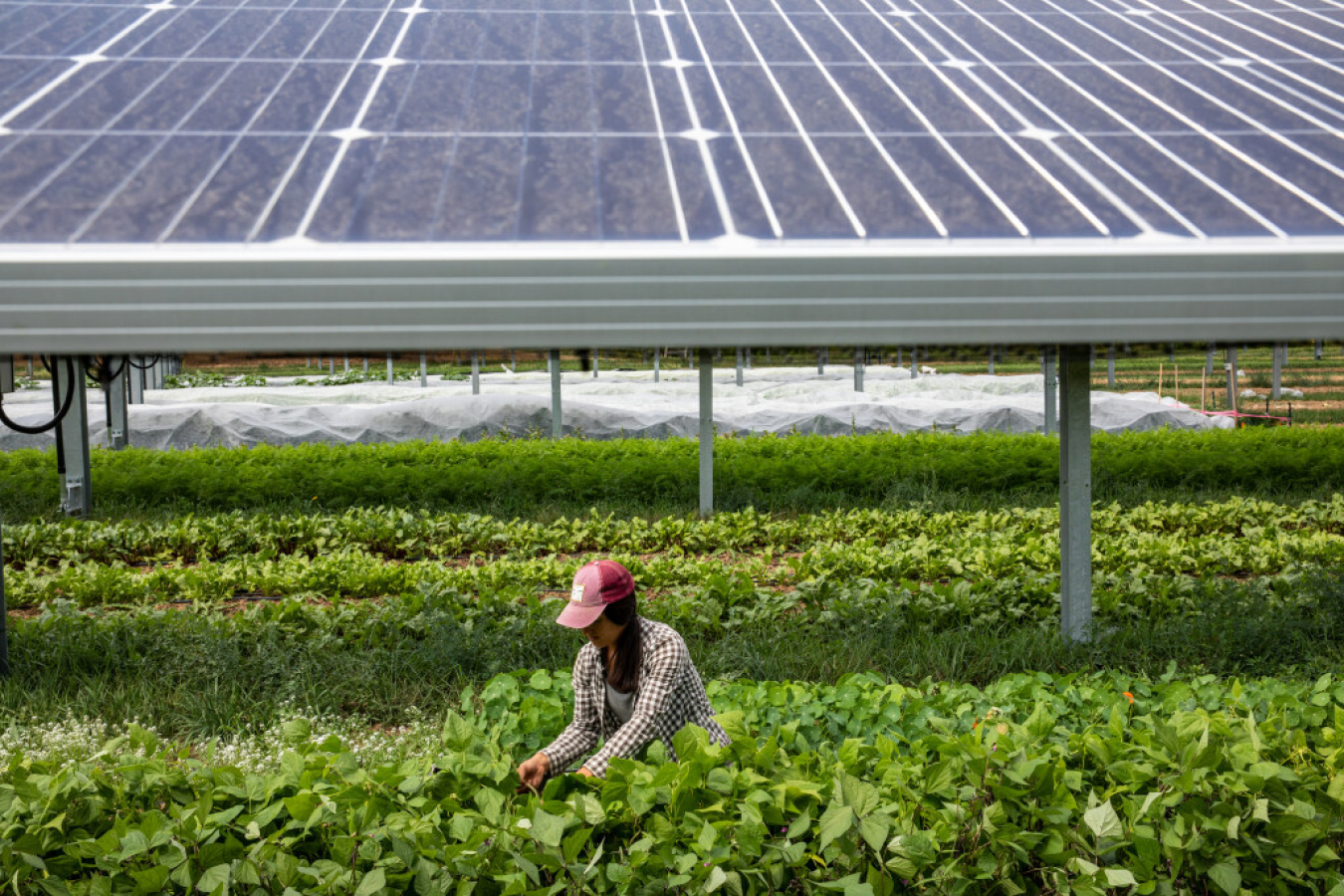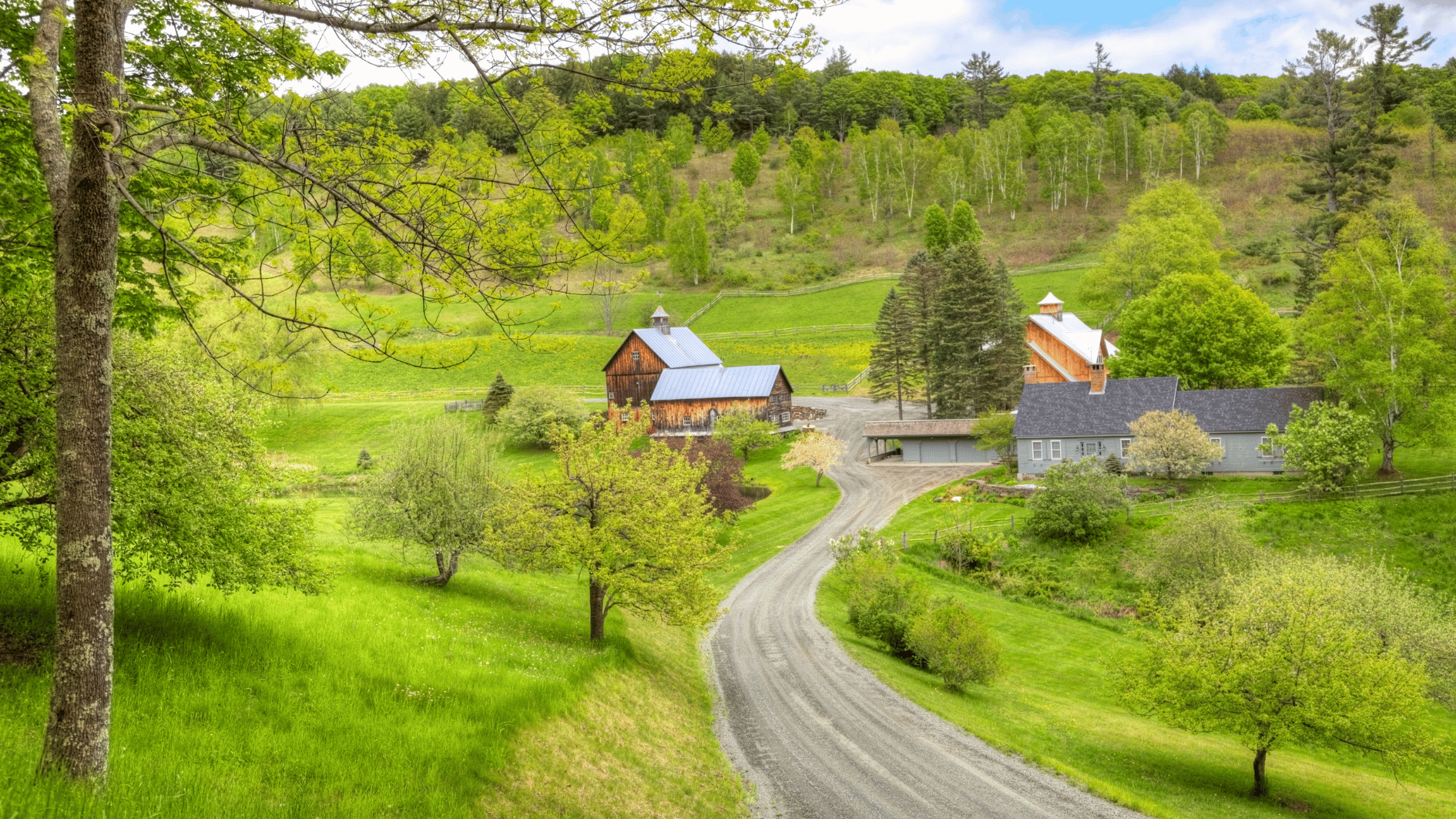Image source: U.S. Department of Energy
As the world faces rising energy demands and climate challenges, a groundbreaking solution is emerging: Agrivoltaics – the practice of integrating solar panels with agriculture. This innovative approach allows farmers to grow crops while generating solar energy, maximizing land use and providing a win-win for food security and clean energy.
With agrivoltaics gaining momentum, the question is: Can solar panels help farms thrive while feeding the world? Let’s dive in.
What Is Agrivoltaics?

Agrivoltaics, also known as dual-use solar farming, involves placing solar panels above crops or livestock areas. Instead of competing for land, solar energy and agriculture work together, providing mutual benefits.
How Does It Work?
✔ Elevated solar panels allow sunlight to reach crops while generating electricity.
✔ Shading from panels reduces water evaporation and protects crops from extreme heat.
✔ The soil beneath retains moisture, creating a better growing environment.
✔ Farmers can sell excess energy to the grid, adding a revenue stream.
This synergy is transforming agriculture, helping farmers increase yields, save water, and earn passive income from solar power.
The Benefits of Agrivoltaics
The advantages of agrivoltaics go beyond just clean energy. Here’s how it’s changing the game for farming and sustainability:
Boosts Crop Yields
✔ Studies show that partially shaded crops can grow better, especially in hot climates.
✔ Plants like tomatoes, peppers, lettuce, and berries thrive under solar panels due to cooler temperatures and reduced stress from direct sunlight.
✔ According to research, some crop yields increase by up to 60% under agrivoltaic setups.
Reduces Water Usage
✔ Shade from panels helps retain soil moisture, reducing irrigation needs.
✔ Less direct sunlight means slower evaporation, saving 30-50% more water in drought-prone regions.
✔ This is crucial as farmers face water shortages and rising irrigation costs.
Generates Clean Energy for Farms
✔ Farms can power irrigation systems, machinery, and storage facilities with solar energy.
✔ Excess electricity can be sold back to the grid, creating an additional income stream.
✔ Agrivoltaic farms reduce carbon emissions, making agriculture more sustainable.
Extra Revenue for Farmers
✔ Farmers can lease land to solar companies while still growing crops.
✔ Governments and energy providers offer tax incentives and grants for agrivoltaic projects.
✔ Energy savings mean lower operating costs, increasing farm profitability.
Protects Livestock & Pollinators
✔ Panels provide shelter for grazing animals like sheep and goats.
✔ Bees and pollinators thrive in agrivoltaic environments, boosting biodiversity.
✔ The system creates a microclimate that benefits both animals and crops.
Agrivoltaics in Action: Examples
Jack’s Solar Garden – Colorado
Located in Longmont, Colorado, Jack’s Solar Garden is one of the largest agrivoltaic farms in the U.S., covering 24 acres. This project integrates over 3,200 solar panels with crops like kale, carrots, and beans, while also supporting pollinators like bees and butterflies. The farm partners with Colorado State University to study the effects of agrivoltaics on soil health and crop productivity.
The University of Arizona’s Agrivoltaic Project
In Tucson, Arizona, researchers at the University of Arizona are testing agrivoltaic systems with chili peppers, tomatoes, and basil. Their findings show that shaded crops retain 20% more moisture, require half the irrigation water, and experience higher yields compared to those grown in full sun. The research also highlights how solar panels stay cooler, improving their efficiency in generating electricity.
These pioneering projects demonstrate how agrivoltaics is transforming American agriculture, proving that farms and solar panels can thrive together.
Challenges and Considerations
While agrivoltaics is promising, challenges remain before widespread adoption:
❌ Initial costs – Setting up agrivoltaic systems requires investment in infrastructure and technology.
❌ Crop compatibility – Some crops may not thrive under shade; careful planning is needed.
❌ Grid connection issues – Selling solar energy depends on local grid policies and incentives.
However, as solar panel costs continue to drop and policies improve, agrivoltaics is becoming more accessible for farmers worldwide.
Is Agrivoltaics the Future of Farming?
With the world facing food insecurity and climate challenges, agrivoltaics offers a smart, sustainable solution by combining farming with renewable energy.

✔ Helps increase crop yields and reduce water consumption
✔ Provides clean, reliable energy for farms
✔ Offers new revenue streams for struggling farmers
✔ Fights climate change by reducing carbon emissions
Final Verdict: A Smart Investment for the Future
Agrivoltaics is not just a trend – it’s a game-changer for the future of farming. As technology advances and policies support green energy, expect more farms to embrace solar power while feeding the world sustainably.





